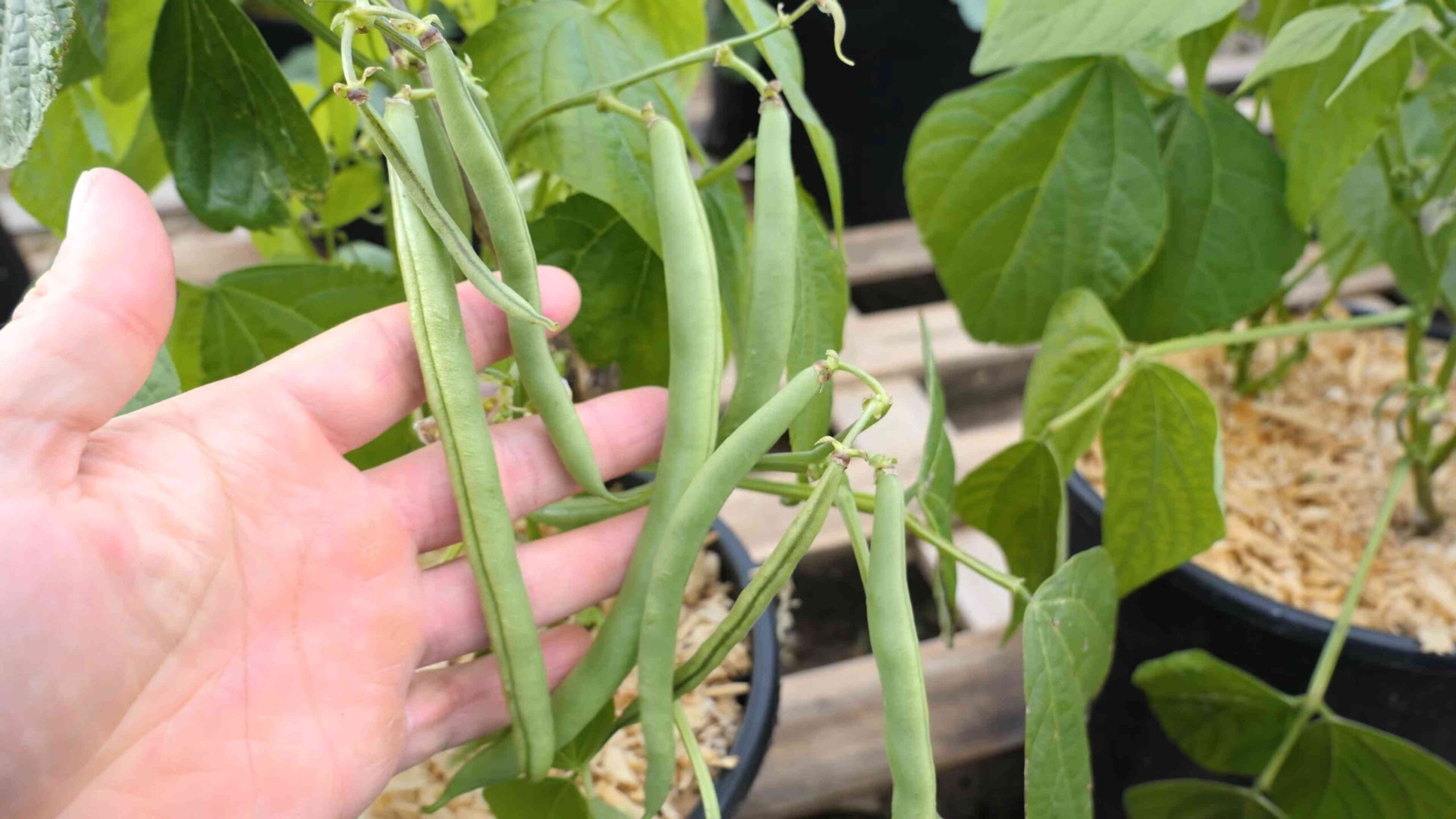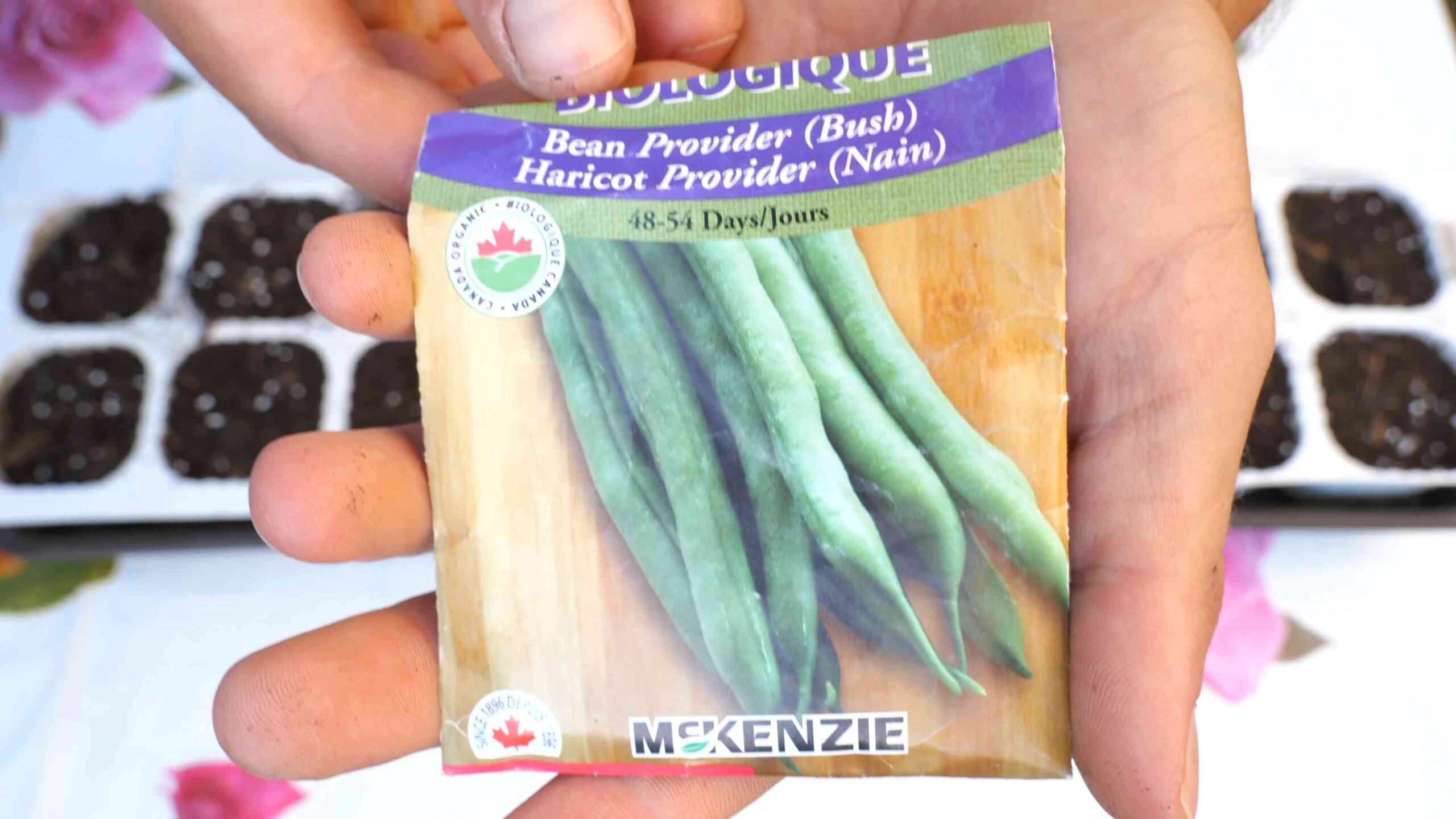Growing bush beans can be incredibly rewarding, offering a delicious and nutritious harvest right from your own backyard! Have you ever dreamed of plucking fresh, crisp beans straight from the vine for your dinner table? Well, you’re in the right place. This isn’t just another gardening article; it’s your personal guide to unlocking the secrets of abundant bush bean harvests with simple, DIY tricks and hacks.
Beans, in general, have a rich history, dating back thousands of years and playing a vital role in cultures worldwide. From ancient civilizations in the Americas to traditional European cuisines, beans have been a staple food source. But let’s bring it closer to home – your home! Growing bush beans is particularly appealing because they’re compact and don’t require trellises, making them perfect for small gardens, patios, or even balconies.
In today’s busy world, finding time for gardening can feel like a luxury. That’s why I’m sharing these time-saving and cost-effective DIY tricks. Imagine bypassing the grocery store produce aisle and enjoying the satisfaction of nurturing your own food. Plus, homegrown beans taste infinitely better! This article will equip you with the knowledge to overcome common challenges, maximize your yield, and enjoy a bountiful harvest of delicious bush beans. So, let’s get our hands dirty and start growing!

DIY: From Seed to Supper – Growing Bush Beans Like a Pro!
Hey there, fellow garden enthusiasts! I’m so excited to share my tried-and-true method for growing bush beans. They’re a fantastic addition to any garden, big or small, and the satisfaction of harvesting your own fresh beans is simply unbeatable. Plus, they’re super easy to grow, making them perfect for beginners. Let’s dive in!
Choosing Your Bush Bean Variety
Before we get our hands dirty, let’s talk about bean varieties. Bush beans come in a rainbow of colors and flavors. Here are a few of my favorites:
* Provider: This is a classic for a reason! It’s early-maturing, produces high yields, and is incredibly reliable.
* Blue Lake Bush: Known for its exceptional flavor and smooth texture, Blue Lake is a winner for fresh eating and canning.
* Contender: As the name suggests, this variety is a tough cookie, tolerating cooler temperatures and still producing delicious beans.
* Roma II: If you love flat, Italian-style beans, Roma II is your go-to. They’re tender, flavorful, and perfect for sauteing.
* Golden Wax: For a pop of color, try Golden Wax beans. Their bright yellow pods add visual appeal to your garden and are delicious steamed or stir-fried.
Preparing Your Garden Bed
Bush beans thrive in well-drained soil that’s rich in organic matter. Here’s how I prepare my garden bed for a bountiful harvest:
* Sunlight: Bush beans need at least 6-8 hours of direct sunlight per day. Choose a sunny spot in your garden.
* Soil Testing: It’s always a good idea to test your soil’s pH. Bush beans prefer a pH between 6.0 and 7.0. You can purchase a soil testing kit at most garden centers.
* Amending the Soil: If your soil is heavy clay or sandy, amend it with compost or well-rotted manure. This will improve drainage, aeration, and nutrient content. I usually add a generous layer (2-3 inches) of compost and work it into the top 6-8 inches of soil.
* Removing Weeds: Clear the area of any weeds and debris. Weeds compete with your bean plants for nutrients and water, so it’s important to get rid of them before planting.
* Leveling the Soil: Rake the soil smooth to create a level planting surface.
Planting Your Bush Bean Seeds
Now for the fun part – planting! Here’s my step-by-step guide:
1. Timing is Key: Bush beans are sensitive to frost, so wait until the danger of frost has passed before planting. Soil temperature should be at least 60°F (16°C). I usually plant about two weeks after the last expected frost date in my area.
2. Direct Sowing: Bush beans are best direct-sown, meaning you plant the seeds directly into the garden bed. They don’t transplant well.
3. Spacing: Sow seeds 1-2 inches deep and 2-4 inches apart in rows that are 18-24 inches apart. I like to use a garden trowel to create small furrows for the seeds.
4. Watering: Gently water the soil after planting. Keep the soil consistently moist but not waterlogged until the seeds germinate.
5. Marking Your Rows: Use plant markers or labels to identify your bean rows. This will help you keep track of what you’ve planted and avoid accidentally weeding them out.
Caring for Your Bush Bean Plants
Once your bean plants have sprouted, it’s important to provide them with proper care to ensure a healthy and productive harvest.
1. Watering: Water regularly, especially during dry spells. Bush beans need about 1 inch of water per week. Water deeply at the base of the plants to avoid wetting the foliage, which can lead to fungal diseases. I prefer to water in the morning so the foliage has time to dry before nightfall.
2. Weeding: Keep the garden bed free of weeds. Hand-pull weeds carefully to avoid disturbing the bean plants’ roots. You can also use a hoe to cultivate between the rows.
3. Fertilizing: Bush beans are relatively light feeders, but they benefit from a side dressing of compost or a balanced fertilizer a few weeks after planting. Follow the instructions on the fertilizer package. Avoid over-fertilizing, as this can lead to excessive foliage growth and fewer beans.
4. Pest Control: Keep an eye out for common bean pests, such as aphids, bean beetles, and slugs. I prefer to use organic pest control methods whenever possible. For aphids, try spraying the plants with a strong stream of water or using insecticidal soap. For bean beetles, hand-pick them off the plants or use row covers to prevent them from reaching the beans. For slugs, set out beer traps or sprinkle diatomaceous earth around the plants.
5. Disease Prevention: To prevent fungal diseases, ensure good air circulation around the plants by spacing them properly and pruning any overcrowded foliage. Avoid overhead watering and water in the morning. If you notice any signs of disease, such as leaf spots or mildew, remove the affected leaves immediately.
Harvesting Your Bush Beans
Harvest time is the most rewarding part of growing bush beans! Here’s how to know when and how to harvest your beans:
1. Timing: Bush beans are typically ready to harvest 50-60 days after planting. The pods should be firm, plump, and snap easily when bent. Harvest beans regularly, about every 2-3 days, to encourage continued production.
2. Harvesting Technique: Gently snap the bean pods off the plant, being careful not to damage the stems or leaves. I like to use two hands – one to hold the stem and the other to pull off the bean.
3. Storage: Freshly harvested bush beans are best eaten right away. However, you can store them in the refrigerator for up to a week. To store them, place them in a plastic bag or container and keep them in the crisper drawer.
4. Preserving: If you have a bumper crop of bush beans, you can preserve them by canning, freezing, or drying. Canning is a great option for long-term storage. Freezing is quick and easy, and dried beans can be used in soups and stews.
Troubleshooting Common Problems
Even with the best care, you may encounter some problems when growing bush beans. Here are a few common issues and how to address them:
* Poor Germination: If your bean seeds aren’t germinating, it could be due to cold soil, poor soil drainage, or old seeds. Make sure the soil temperature is at least 60°F (16°C) before planting. Improve soil drainage by adding compost or other organic matter. Use fresh seeds for best results.
* Yellowing Leaves: Yellowing leaves can be a sign of nutrient deficiency, overwatering, or disease. Test your soil to determine if it’s lacking any essential nutrients. Adjust your watering schedule to avoid overwatering. Inspect the plants for signs of disease and treat accordingly.
* Lack of Bean Production: If your bean plants are growing well but not producing beans, it could be due to lack of pollination, high temperatures, or over-fertilizing. Bush beans are self-pollinating, but you can encourage pollination by shaking the plants gently. High temperatures can inhibit bean production, so try to provide some shade during the hottest part of the day. Avoid over-fertilizing, as this can lead to excessive foliage growth and fewer beans.
* Pest Infestations: As mentioned earlier, keep an eye out for common bean pests and take action to control them.
Extending Your Harvest
Want to enjoy fresh bush beans for as long as possible? Here are a few tips for extending your harvest:
* Succession Planting: Plant a new batch of bush beans every 2-3 weeks to ensure a continuous harvest throughout the growing season.
* Choosing Early and Late Varieties: Select varieties that mature at different times. This will help you spread out your harvest.
* Providing Shade: During the hottest part of the summer, provide some shade for your bean plants to prevent them from bolting (going to seed).
* Harvesting Regularly: As mentioned earlier, harvest beans regularly to encourage continued production.
Enjoying Your Homegrown Bush Beans
Now that you’ve successfully grown your own bush beans, it’s time to enjoy the fruits (or rather, vegetables) of your labor! Here are a few of my favorite ways to prepare and enjoy homegrown bush beans:
* Steamed: Steaming is a simple and healthy way to cook bush beans. Simply steam them until they’re tender-crisp, then season with salt, pepper, and a drizzle of olive oil.
* Sauteed: Sauteed bush beans are

Conclusion
So, there you have it! Growing bush beans doesn’t have to be a daunting task. With a little preparation, the right techniques, and a dash of patience, you can enjoy a bountiful harvest of fresh, delicious beans right from your own backyard. This DIY approach to growing bush beans is a must-try for several compelling reasons.
First and foremost, it’s incredibly rewarding. There’s something truly special about nurturing a plant from seed to table, knowing you’ve played an active role in providing healthy, homegrown food for yourself and your family. Beyond the personal satisfaction, growing your own bush beans offers significant cost savings compared to purchasing them at the grocery store, especially if you consume them regularly. Plus, you have complete control over the growing process, ensuring your beans are free from harmful pesticides and chemicals.
But the benefits don’t stop there. Growing bush beans is also an excellent way to connect with nature, de-stress, and get some fresh air and sunshine. It’s a fantastic activity for individuals, families, and even community gardens. And let’s not forget the incredible flavor of homegrown bush beans – they’re simply unmatched by anything you can buy in a store. The crispness, the sweetness, the vibrant green color – it’s a taste of summer that you’ll savor with every bite.
Now, for a few suggestions and variations to further enhance your bush bean growing experience:
* Succession Planting: Plant new seeds every two to three weeks to ensure a continuous harvest throughout the growing season.
* Companion Planting: Plant bush beans alongside other beneficial plants like carrots, cucumbers, and marigolds to deter pests and improve soil health.
* Vertical Growing: While bush beans are naturally compact, you can still provide them with some support using small trellises or stakes, especially if they become heavily laden with beans. This can help prevent the beans from touching the soil and rotting.
* Different Varieties: Experiment with different varieties of bush beans to find your favorites. Some popular options include Blue Lake, Contender, and Provider. Each variety has its own unique flavor, texture, and growing characteristics.
* Seed Saving: Once you’ve grown a successful crop of bush beans, consider saving some of the seeds for next year’s planting. This is a great way to preserve your favorite varieties and become more self-sufficient.
We wholeheartedly encourage you to give this DIY trick for growing bush beans a try. It’s a simple, affordable, and incredibly rewarding experience that will connect you with nature and provide you with a delicious and healthy harvest. Don’t be afraid to experiment, adapt the techniques to your specific climate and growing conditions, and most importantly, have fun!
Once you’ve harvested your first crop of homegrown bush beans, we’d love to hear about your experience. Share your photos, tips, and stories in the comments section below. Let’s create a community of passionate bush bean growers and learn from each other’s successes and challenges. Happy gardening!
Frequently Asked Questions (FAQ)
What is the best time to plant bush beans?
The best time to plant bush beans is after the last frost of spring, when the soil has warmed to at least 60°F (15°C). Bush beans are sensitive to cold temperatures, so planting too early can result in poor germination or stunted growth. In most regions, this typically falls between late spring and early summer. You can also use a soil thermometer to ensure the soil is warm enough before planting. If you live in a warmer climate with a longer growing season, you may be able to plant a second crop of bush beans in late summer for a fall harvest.
How much sunlight do bush beans need?
Bush beans require at least six to eight hours of direct sunlight per day to thrive. Choose a planting location that receives plenty of sunlight throughout the day. If your garden doesn’t get enough direct sunlight, you can supplement with grow lights. Insufficient sunlight can lead to leggy plants with reduced bean production.
What type of soil is best for growing bush beans?
Bush beans prefer well-drained, fertile soil with a pH between 6.0 and 7.0. Amend the soil with compost or other organic matter before planting to improve drainage and fertility. Avoid planting in heavy clay soil, as this can lead to root rot. If your soil is compacted, consider tilling it to improve aeration. A soil test can help you determine the pH and nutrient levels of your soil and make necessary amendments.
How often should I water bush beans?
Bush beans need consistent moisture, especially during flowering and pod development. Water deeply and regularly, aiming for about one inch of water per week. Avoid overhead watering, as this can promote fungal diseases. Instead, water at the base of the plants using a soaker hose or drip irrigation system. Mulching around the plants can help retain moisture and suppress weeds. Check the soil moisture regularly and adjust your watering schedule accordingly, depending on the weather conditions.
How do I fertilize bush beans?
Bush beans are relatively light feeders and don’t require heavy fertilization. However, a side dressing of compost or a balanced organic fertilizer can be beneficial, especially during flowering and pod development. Avoid using fertilizers that are high in nitrogen, as this can promote excessive foliage growth at the expense of bean production. Follow the instructions on the fertilizer label carefully and avoid over-fertilizing.
What are some common pests and diseases that affect bush beans?
Some common pests that affect bush beans include aphids, bean beetles, and spider mites. Common diseases include powdery mildew, bean rust, and anthracnose. Regularly inspect your plants for signs of pests or diseases and take action promptly. You can use organic pest control methods, such as insecticidal soap or neem oil, to control pests. To prevent diseases, ensure good air circulation around the plants, avoid overhead watering, and practice crop rotation. Choose disease-resistant varieties of bush beans whenever possible.
When and how do I harvest bush beans?
Bush beans are typically ready to harvest about 50 to 60 days after planting. Harvest the beans when they are young, tender, and fully developed, but before the seeds inside become too large. Snap the beans off the plant carefully, being careful not to damage the stems. Harvest regularly to encourage continued production. Overripe beans will become tough and stringy.
Can I grow bush beans in containers?
Yes, bush beans can be successfully grown in containers. Choose a container that is at least 12 inches deep and wide to provide enough room for the roots to grow. Use a well-draining potting mix and ensure the container has drainage holes. Water regularly and fertilize as needed. Place the container in a sunny location that receives at least six to eight hours of direct sunlight per day.
How do I save seeds from bush beans?
To save seeds from bush beans, allow some of the pods to mature fully on the plant until they are dry and brown. Harvest the pods and shell the beans. Spread the beans out on a tray to dry completely for several weeks. Store the dried beans in an airtight container in a cool, dry place. Label the container with the variety and date.
Why are my bush beans not producing beans?
There are several reasons why your bush beans may not be producing beans. These include insufficient sunlight, poor soil fertility, lack of pollination, pests or diseases, and improper watering. Ensure your plants are getting enough sunlight, amend the soil with compost or fertilizer, control pests and diseases, and water regularly. If the weather is hot and dry, you may need to hand-pollinate the flowers.





Leave a Comment